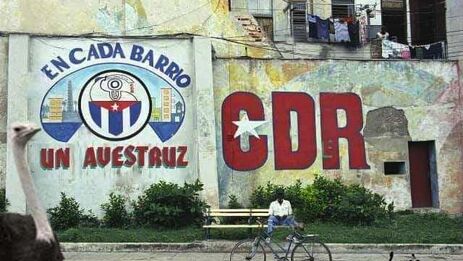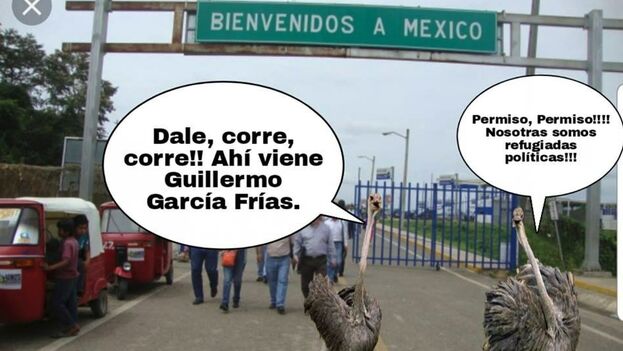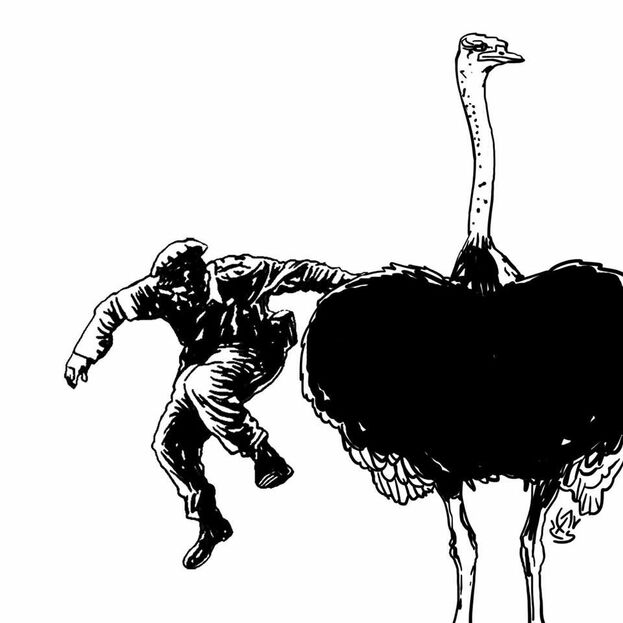
![]() 14ymedio, Yoani Sanchez, Havana, 11 April 2019 — Social networks were recently flooded with parodies about the flight of the presidential caravan from an area affected by the tornado, but this week the protagonists are ostriches, jutías (giant rats) and crocodiles which, according to comandante Guillermo García Frías, could resolve Cuba’s food problem. Just this week the 91-year-old García Frías proposed raising these animals to fill Cuban stomachs.
14ymedio, Yoani Sanchez, Havana, 11 April 2019 — Social networks were recently flooded with parodies about the flight of the presidential caravan from an area affected by the tornado, but this week the protagonists are ostriches, jutías (giant rats) and crocodiles which, according to comandante Guillermo García Frías, could resolve Cuba’s food problem. Just this week the 91-year-old García Frías proposed raising these animals to fill Cuban stomachs.
Memes have become a democratic alternative to the cartoon as a way of criticizing a power not greatly given to jokes. It is within the reach of almost anyone to make one and spread it until it becomes viral.
Political humor has been absent for decades in the official Cuban press, where only burlesque cartoons about capitalism or the president of the United States are found. No one has ever dared to offer irony about the ministers, officials or figures of the national leadership. All the jokes about them have been oral, told in low voices or in gestures.

And then the internet came to mobile phones. What in other nations has been happening for more than a decade has just began to become a reality for the residents of this Island. Now, the virtual world is not only a way to contact friends who have emigrated, seek out scholarships as a way to escape to some other place, or to ask a relative in exile to recharge your phone, but it has been erected as a place to mock the Castro regime. All the carefully contained creativity is exploding.

The memes reach everyone, spark a smile and go viral many times over. The political power does not know how to deal with them: if they ignore them, they still generate laughter and reflections; if they mention and contest them, they consecrate them. The slogans can be infinitely parodied in these sparkling images and funny collages, while the sober ideological language of the billboards in the streets cannot adopt less formal codes to try to compete with such mockery.
The result is that the dissatisfaction and popular disapproval of the Executive’s management is coming to the fore in these collages. For example, the regime’s phrase, “In each block a committee” – referring to the Committees for the Defense of the Revolution, a national system of informants where all citizens are expected to monitor and report on each other’s revolutionary fidelity – is bowdlerized to “In each block an ostrich,” accompanied by a rework of the famous photo of Fidel Castro throwing himself from a tank, but in this version he is descending from one of those enormous African birds, a metaphor perhaps of a Revolution sustained more by improvisation than by military courage.
The Plaza of the Revolution has a problem. The irreverence of the meme has a greater impact on people than the solemnity of slogans because they are corrosive, familiar, catchy and make one think. The tendency of Cubans to look for the humor in things and to grab onto “anything to relax” turns out to be a very fertile breeding ground for these vignettes to deeply embed themselves in the collective imagination.
To mock the power is to begin to tear it down.
__________________________
The 14ymedio team is committed to serious journalism that reflects the reality of deep Cuba. Thank you for joining us on this long road. We invite you to continue supporting us, but this time by becoming a member of 14ymedio. Together we can continue to transform journalism in Cuba.
